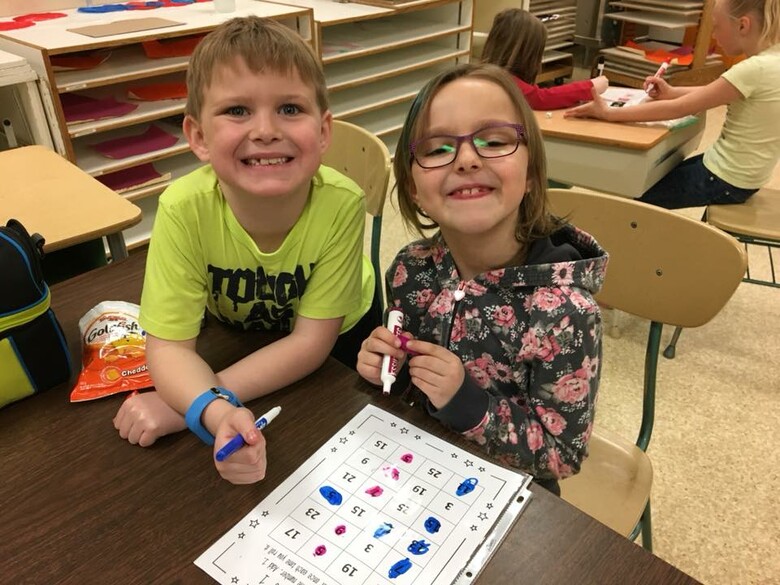K-12 Re-Entry Plan: Scenarios for September
Posted on:
Education Minister LaGrange shared yesterday that the Province is focused on a return to 'near-normal' classes in September 2020-21. Read the Government's School Re-entry Plan.
Alberta Education has released its plan that lays out the different scenarios schools may face in September - while putting student and staff safety first:
Education Minister Adriana LaGrange issued the following statement at the June 10th news conference:
"Our goal is to get us back to near normal learning as soon as possible. Based on the information we have at hand now, I anticipate that all students will be back at school in September, with some health measures. This is scenario 1 in the Re-entry Plan. Our government will make the final decision if schools will return to near normal operations no later than August 1. However, we should all continue to prepare for the three possibilities and be ready to transition from one scenario to the other at any point in the next school year, given the unpredictable nature of the COVID-19 pandemic. Government will provide direction on which scenario each school authority will follow."
- Adriana LaGrange, Minister of Education
A final decision on which scenario will be in effect for the start of fall classes will be made by the Government of Alberta by August 1.
Please note: the government will be choosing the scenarios that school jurisdictions will have to follow and those scenarios may vary by region.
- Scenario 1 - near-normal operations with some health measures
COVID-19 information: Gudiance for schools on re-entry scenario 1 - Scenario 2 - partial resume of in-school classes with additional health measures
COVID-19 information: Guidance for schools on re-entry scenario 2 - Scenario 3 - at-home learning continues
Scenario 1
Measures to reduce the risk
Cleaning
- Enhance cleaning and disinfecting practices.
- Clean all areas of the school daily.
- Clean washrooms and high-touch surfaces multiple times a day.
- Regularly schedule deep cleaning when students are not present.
Hygiene and illness
- Routinely screen all staff and students.
- Create a strict stay-at-home policy for any students or staff with symptoms of COVID-19.
- Set hand hygiene expectations when entering and exiting the school and classrooms, before and after eating.
- Regularly remind students and staff of respiratory etiquette:
- cover coughs and sneezes
- avoid touching your face
- dispose of used tissues promptly
- practice hand hygiene
- Students who develop symptoms at school may be asked to wear a mask and isolate in a separate room until a parent arrives for pickup. If a separate room is not available, the student must be kept at least 2 metres away from other individuals.
Physical distancing and grouping
- Practice physical distancing when possible.
- Emphasize other hygiene practices in classrooms, buses and during activities when physical distancing may not be possible.
- Reorganize rooms to allow for more physical space.
- Create cohorts of students by class where possible.
- Guide foot traffic flow through entrances and hallways by using markers on the floor or pylons/barriers.
- Avoid large gatherings like assemblies.
Masks
- Staff and students will not be mandated to wear masks.
- Consider wearing masks when there is prolonged close contact (greater than 15 minutes) and distance of 2 metres cannot be maintained.
- Wearing masks is generally not recommended for younger students.
Shared items
- Create a “no sharing policy” - all students should have their own supplies.
- Clean equipment between uses if students or staff share anything.
If there is a case of COVID-19 in a school:
- The zone medical officer of health will work with school authorities to quickly:
- identify cases through easily accessible testing
- identify close contacts
- create isolation measures when needed
- The zone medical officer of health will work with school authorities to provide follow-up recommendations and messaging for staff, parents and students.
- Alberta Health Services may request the school close in-person classes to allow a public health investigation to take place.
- Each school authority will support students and staff to learn or work at home if they are required to self-isolate.
Scenario 2
Measures to reduce the risk
Scenario 2 includes the same considerations as scenario 1, with the following differences:
- Stricter health measures, including physical distancing of 2 metres and a recommended maximum of 15 people in a classroom.
- Students will attend school less regularly as school authorities will need to adjust their class schedule and configuration to meet the physical distancing requirement.
Assessment and student supports
Diploma exams
- August diploma exams will proceed for students taking diploma courses this summer.
- In scenarios 1 and 2, students will write diploma exams if in-school classes are available.
- In scenario 3, exams may be cancelled.
Provincial achievement tests (PATs)
- In scenarios 1 and 2, PATs for grades 6 and 9 can be held if in-school classes are available. School authorities can choose to participate.
- If scenario 3 is in place at the beginning of the school year, we will cancel January PATs and decide on the May/June PATs based on how long in-school classes are cancelled.
- Any summer programming will follow scenario 2 of the re-entry plan and the associated public health restrictions.
Student supports
School authorities can, as deemed appropriate at the local level, reduce time spent teaching non-core subjects to allow for additional instruction time on core subjects.
Schools should have mental health supports in place for students and staff.
Summer school
We look forward to and continue to prepare for the return of students and the 2020-21 school year! We will continue to share information as it becomes available.